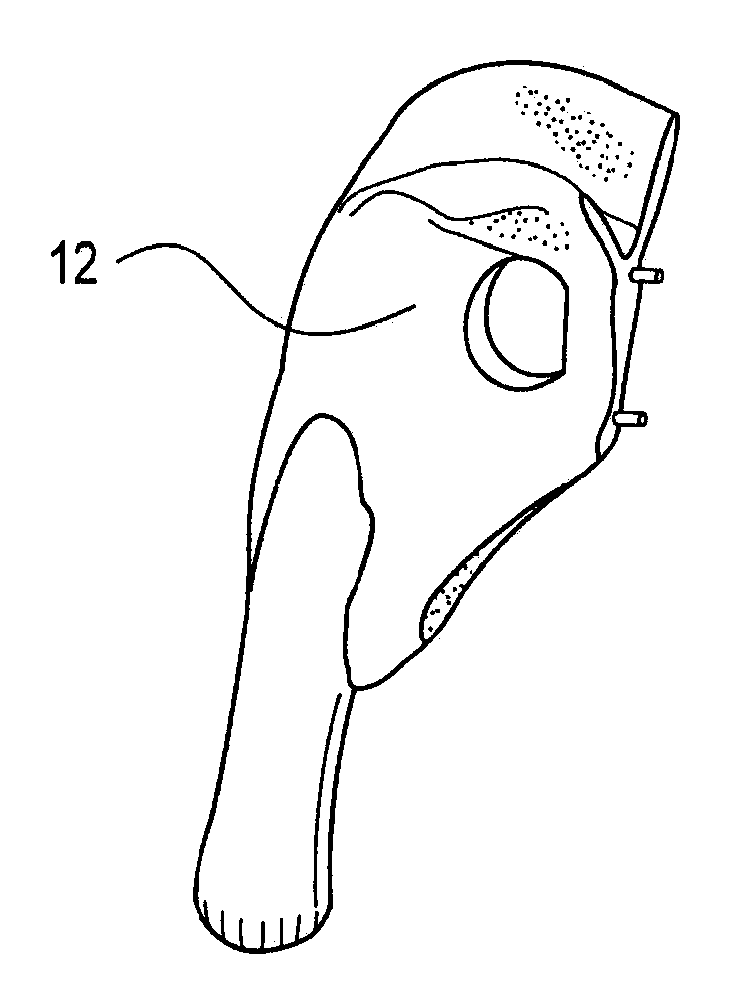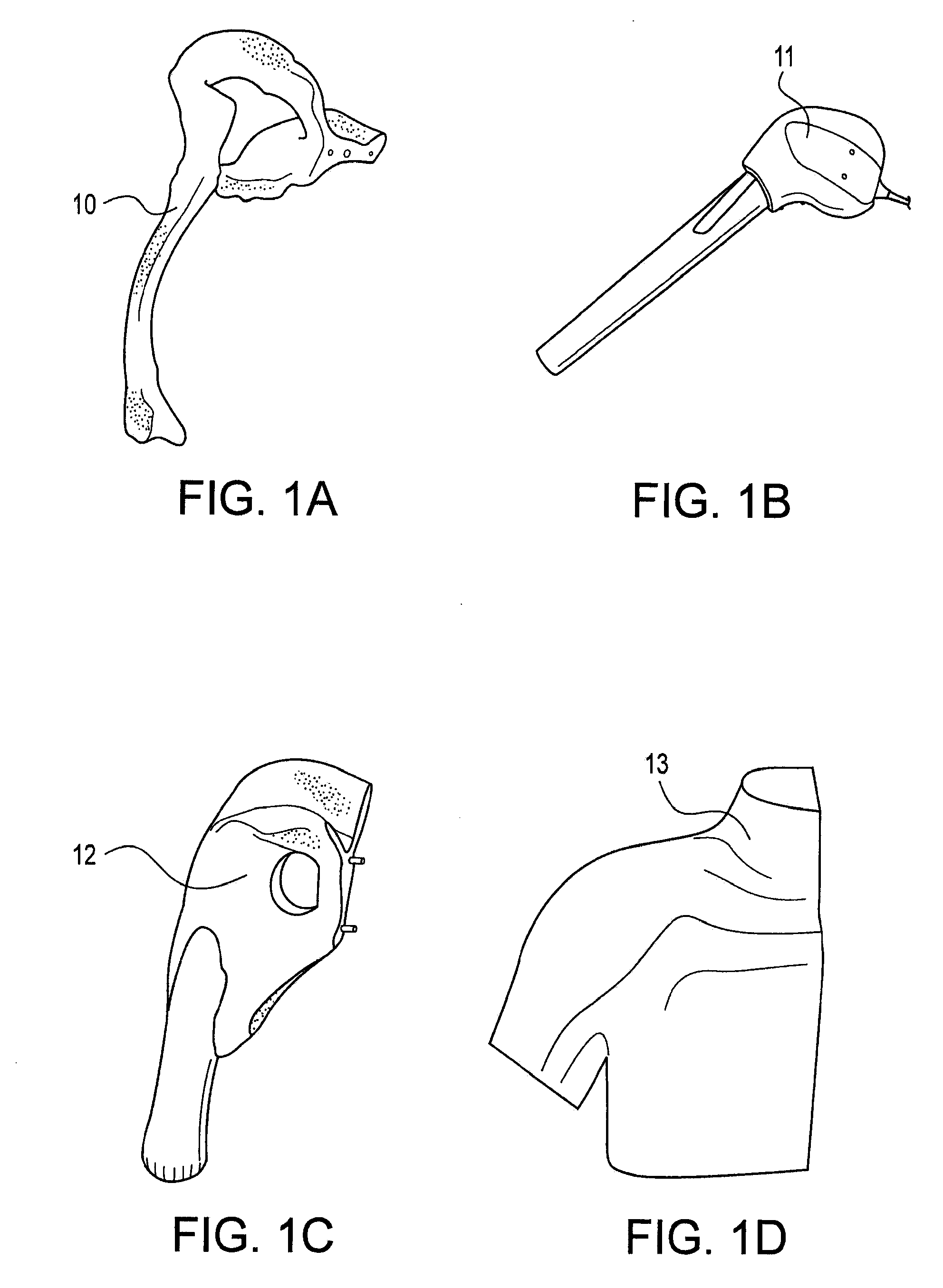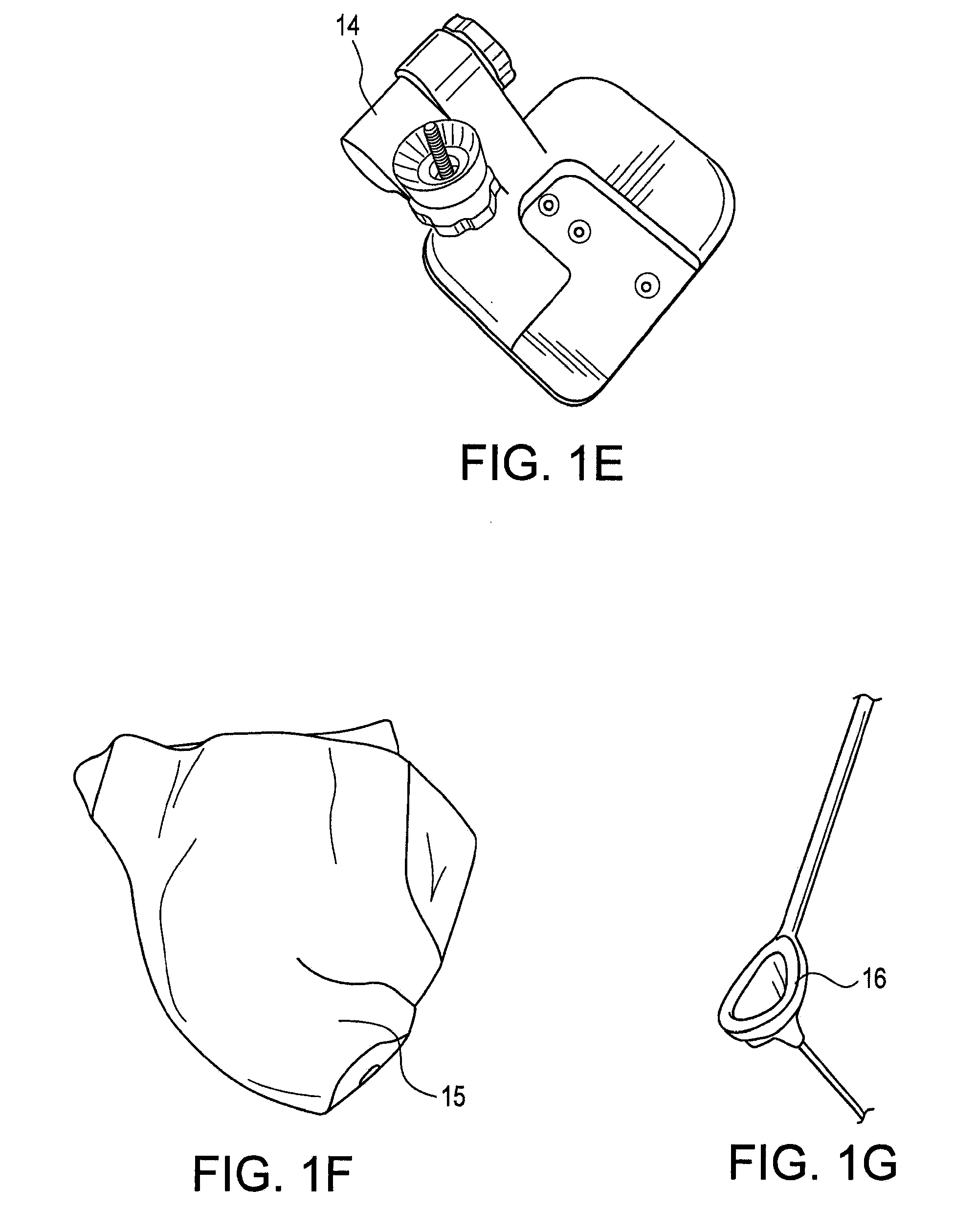Shoulder model for shoulder arthroscopy
- Summary
- Abstract
- Description
- Claims
- Application Information
AI Technical Summary
Benefits of technology
Problems solved by technology
Method used
Image
Examples
Embodiment Construction
[0048]The present invention relates to a shoulder model and methods of shoulder arthroscopy which utilize the shoulder model of the present invention.
[0049]The shoulder model 100 (FIG. 2L) of the present invention is formed of an acromioclavicular (AC) joint assembly 10, a joint capsule assembly 11, a scapula and mounting post 12, a shoulder musculature 13, a labrum glenoid assembly 16, a skin 15, and a base 14, as shown in FIGS. 1A-1G. The AC joint assembly 10, the joint capsule assembly 11, the scapula and mounting post 12, the shoulder musculature 13, the labrum glenoid assembly 16, the skin 15, and the base 14 may preferably be PS-012-2, PS-012-3, PS-012-4, PS-012-5, PS-012-8, PS-012-7, and PS-012-6, respectively, all sold by Arthrex, Inc. of Naples, Fla. A thumb nut, for example, PS-012-9, sold by Arthrex, Inc. of Naples, Fla., or other securing means known in the art may be used to secure the AC joint assembly 10, the joint capsule assembly 11, and the scapula and mounting pos...
PUM
 Login to View More
Login to View More Abstract
Description
Claims
Application Information
 Login to View More
Login to View More - R&D
- Intellectual Property
- Life Sciences
- Materials
- Tech Scout
- Unparalleled Data Quality
- Higher Quality Content
- 60% Fewer Hallucinations
Browse by: Latest US Patents, China's latest patents, Technical Efficacy Thesaurus, Application Domain, Technology Topic, Popular Technical Reports.
© 2025 PatSnap. All rights reserved.Legal|Privacy policy|Modern Slavery Act Transparency Statement|Sitemap|About US| Contact US: help@patsnap.com



